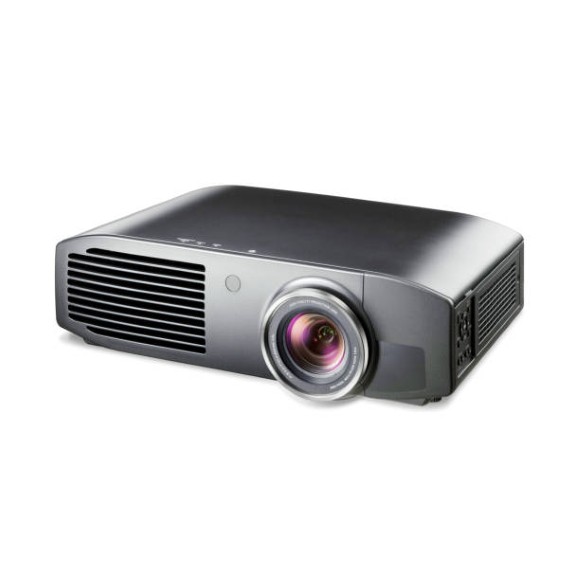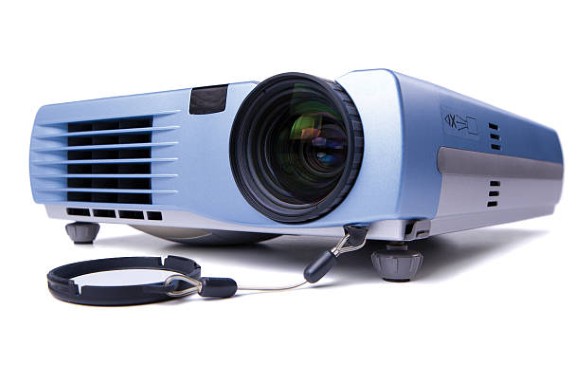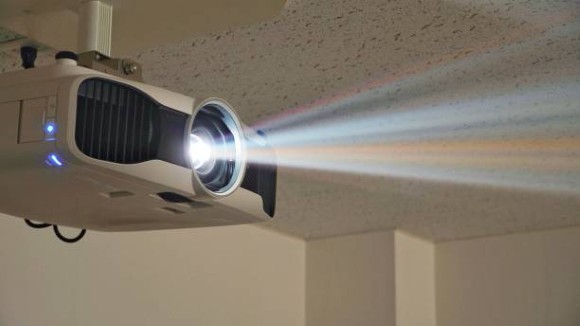|
With all the consumer goods available these days, selecting the best projector could be a stroll in the park provided you have the right information and knowledge. There are many options in the market with regards to projectors. You simply have to be attentive to your needs and requirements to select the most suitable one. What exactly is a projector?The most effective way to explain the concept of a projector is to describe it as an inverted camera that shoots light out of a lens rather than receiving it. The two main types of projectors include: * DLP projectors - These projection devices use a combination of an illumination source and a color wheel and a chip with tiny tilting lenses. The light is reflected off the color wheel, which reflects off the mirrors, and is further projected onto the screen. * LCD projectors: These projection devices use a light source that transmits light through three LCD Chips (which are the primary colors of green, red, and blue) to create and project images. How do you choose which projector to buy?Home TheaterIf you're looking for an ideal projector for the best movie-watching experience, then instead of buying commercially-made projectors, opt for a home theatre projector. The home theatre projector delivers viewers with an incredible picture quality that is rich in colors, high contrast, and rich blacks. These projectors are best used in rooms where the level of light can be controlled. Pick a projector with 4K resolution. This will give you HDR compatibility and a high contrast ratio. High contrast ratios can produce sharper images. For Office UseProjectors for offices or commercial projectors are best for static images like PowerPoint slides and graphs, but they also have the potential to display multimedia and entertainment. The output of lumens is the main thing when it comes to office projectors. It is possible to choose between a regular or short-throw projector to use in offices. GamingA gaming projector is the best option for those who are interested in playing games with a huge screen. When buying a gaming projector there are three aspects to keep in mind the refresh rate (lag time), resolution and cost. If the gaming console you are using has 4K resolution, then buy an item that has 4K resolution to get the most stunning graphics. For classroomsProjectors in classrooms can help make learning more engaging and fun. Classroom projectors come with the same features as the commercial ones, but use a lower resolution. Projectors equipped with speakers make it simple to present in schools. Things to keep in mind when you are buying the projectorLight SourceA projector won't be able to display a bright image when it's not equipped with sufficient lighting. If the light is low and the image will be blurry and soft even if it's in a dark space. The lumens rating is a measure of light and brightness intensity. The lumens rating informs you of the amount of light a projector can put out. Projectors with 1,000 ANSI Lumens or more have adequate brightness for home theatre use. Display ResolutionDisplay Resolution is an important aspect. Both DLP and LCD projectors have a fixed amount of pixels. High-resolution projectors are ideal if you view HD content. A pixel count of 1024x768 is sufficient for DVD. HDTV signals with 720p require a pixel count of 1280x720 to display. Likewise, the input signal for 1080i HDTV needs an pixel count of 1080x2080. Contrast RatioThe ratio of contrast and brightness are closely related. Contrast is the proportion between black and white parts of an image. A high contrast ratio produces the appearance of blacker whites with whiter whites. Your image will appear washed out even if your projector has a very high lumens rating. The ideal contrast ratio is at least 1500 to 1, but higher values would be an ideal choice. Color ReproductionAnother important aspect to consider is the reproduction of colors. To get the best out of your projector it is crucial to know what colors appear in the darkest and most prominent areas. The projector's color intensity and natural tones need to be examined. InputsMake sure that your projector is equipped with all the inputs you require. VGA, HDMI and DVI are the most frequently used inputs in a projector. It is important to ensure that the projector you're looking at has all the necessary input connections. PortabilityIt's not only important for transporting and installing, but also to carry the projector around. Portable projectors can be used to see any type of content from anywhere, including a white bedsheet.
0 Comments
Similar to other kinds of collaboration and meeting room technology, projectors also continue to develop and improve. Long gone are the days of overhead projectors and slide presentation. Present-day projectors can provide HD images with wireless connectivity, interactive capabilities and can even offer crystal clear images even in rooms with lots of sunlight. Modern projectors are able to split the screen into four quadrants, allowing you to show multiple images at once. With plenty of places your company's technology budget could be used, it's essential to know what projectors of today are capable of and when to make use of a projector. When should you consider using the projector?Lenses are the most important and essential element of any projector. Projectors can now be used in large rooms that have large images thanks to the advancements in lens technology. Short-throw projectors can project an image that is readable in the smallest space, or from a small distance and some modern models even project into the shape of a dome. Projectors are no longer just a only a one-sided display tool. Today's projectors are equipped to connect wirelessly to the internet and allows multiple users to communicate on the screen simultaneously. They are becoming an essential investment in the field of business technology due to their high-tech capabilities. Here are some examples that illustrate when a projection device is valuable: Meetings on the goIf you create a lot of presentations from your mobile or don't often hold meetings in the same place A small, light portable projector can be worth the investment. A projector can offer a more detailed, larger image than simply displaying the content on laptops. Many portable projectors are able to be powered through the USB and some models even come with wireless capabilities, so it is easy to adapt to any conditions and possibilities for your meeting room. Going green (and conserving green)A projector to be used in your conference space or other spaces for meetings is a major cost upfront, but these investments usually save you money in the long run. Many interactive short-throw projectors include annotation software that allows users to use a pencil stylus or finger, based on the technology supported by the projector -- to draw or write on the projected screen. You can save the image to your computer and share as needed and not have to print hard copies of slide decks or other presentations materials. Image size is crucial.Collaboration success depends on big displays. Why? Because people aren't able to communicate on things they cannot see. The instances where a group -- and meeting space is small enough to allow all to gather around a tiny screen are rare and infrequent. In the majority of cases, medium to large-sized groups of people must be able read the same content images, and increasing the size of these images using a projector is the best option. This is particularly important in training and educational settings where low-quality or inadequate presentation materials can hinder learning. Engaging itWe have all witnessed somebody, or experienced one who snored in an insufferable meeting. One person talking to a group of people is not an effective or enjoyable way to do business or create learning opportunities. Interactive projection technology allows many users to draw or interact with a screen at the same time which opens the way to instant collaboration and a greater level of participation from the participants. If you're trying to make your mark, you must be memorable.It doesn't matter if you're a vendor at a trade show , or hosting a large gathering an event is a great location to impress using projector technology. Short-throw projectors allow you to project an image in an area that is small; set one in your booth at a trade show to show video demonstrations of your projects or contact information for sales reps or pictures of the latest products. Or hang a large screen behind an event's keynote speaker during a large-scale event and use a projector display real-time social media content with responses and questions for the speaker. You could also make use of a projector to show information like the schedule of the event or an interactive map of the campus for guests as well as cut down on waste paper and also be able update information in a flash if the times or locations change. Projectors support desire for collaborationWhen your employees attend an event, meeting or even a corporate training session most likely, they're looking for and are expecting an engaging, collaborative environment. It is crucial to ensure satisfaction of employees and retention by selecting the appropriate technology for your meeting and training space. Trends in projector technology are in line with the workplace's trends towards collaboration and interaction. To boost productivity and increase satisfaction within your business seek out the top technology solutions for presentation and training spaces.
Cleaning your projector the right way is important to maintain optimal performance. Every few months, you should clean your projector lens. Most projector manufacturers include a lens cleaning kit with their projectors. But if you don't have one, you have to find an alternative way to clean your projector lens. With this guide, we will demonstrate how to clean your projector's lens the right way without the use of a lens cleaning kit and without the risk of damaging your projector in the process. How to Clean Your Projector the Right Way? A Step By Step GuideBefore you start cleaning your projector, it is recommended that you unplug it from the power source to avoid any accidental damage. It is also a good idea to cover your work area with a soft cloth or a sheet of paper to avoid scratching the surface of your projector during the cleaning process. View this web site for more hints about projector. Here are the materials that you will need to clean your projector lens:
Let's start with the cleaning process: 1. Remove The Dust or Dirt:The first step is to remove any dust or dirt that has accumulated on the surface of your projector lens. You can use a soft, clean cloth to wipe the lens gently. If there is any stubborn dirt or dust on the lens, you can use a can of compressed air to remove it. 2. Apply The Lens Cleaning Solution:The next step is to apply a lens cleaning solution to a soft, clean cloth. You can also use cotton swabs if you prefer. Gently wipe the surface of the lens with the solution-soaked cloth or cotton swab in a circular motion. 3. Remove The Excess Solution:Use a clean, dry cloth to remove any excess solution. Be sure to wipe in a circular motion allow the lens to completely dry before storing. If there are still some stubborn stains on the surface of the lens, you can repeat the process until the lens is completely clean. You can get the best performance from your projector by following these steps. In case you fail to regularly clean your projector lens, you may face big consequences and likely a big problem. What are the Consequences of Not Cleaning Your Projector?Cleaning your projector is important, but many people fail to do so on a regular basis. A projector needs to be cleaned at least once every three months. However, if you don't clean your projector, you may face the following consequences:
Thus, it is very important that you clean your projector on a regular basis to avoid facing any of these issues. ConclusionOnce you have learned how to clean your projector properly, you can follow the steps outlined in this guide to maintain your projector. Be sure to unplug your projector before starting to clean it. If you follow these simple steps, you can ensure that your projector will always perform at its best. We hope that this guide was helpful and that you can now clean your projector the right way. Thank you very much for taking the time to read this.
|
|



